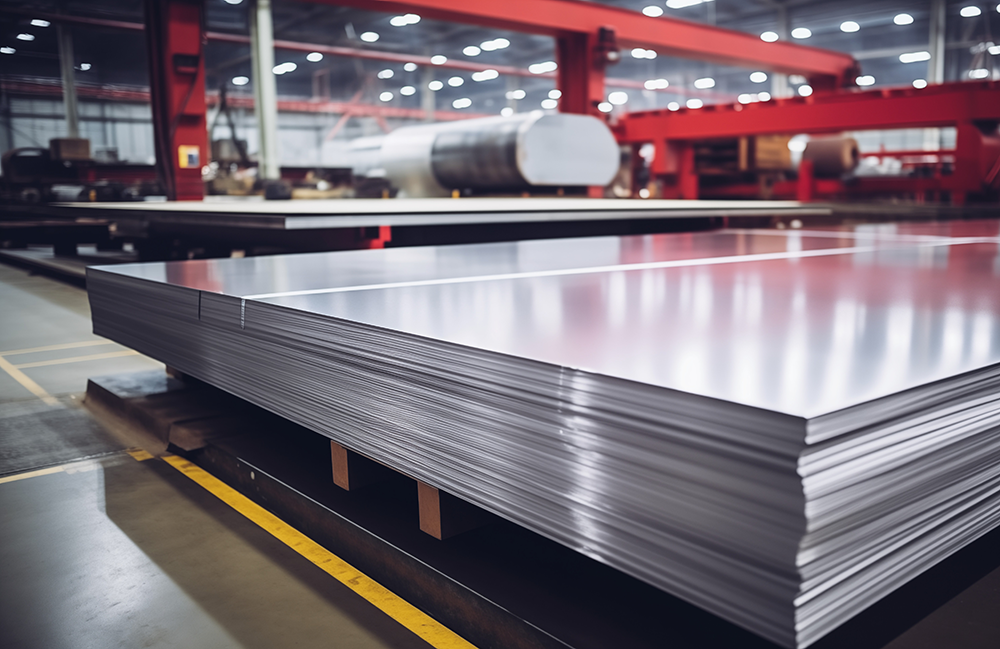Stainless MMI: Mills Secure Price Increases Despite Weak Demand

The Stainless Monthly Metals Index (MMI) moved sideways, but the downside bias continued. Overall, the index fell 0.9% from June to July. Meanwhile, nickel prices continued their slow slide downward.
Mill Price Hikes Hold
June brought in a wave of price hikes from U.S. mills. NAS led the market, issuing possibly its largest ever increase in one single announcement. This was quickly followed by ATI and Outokumpu, which seemingly reinforced NAS’s move. While buyers with negotiated contracts have thus far been spared from the increase, spot buyers and suppliers looking to shift toward domestic sources are now impacted by considerably higher stainless steel prices, with little room to negotiate.
Ahead of tariffs, mills had little control over prices. Discounts trended at historical highs. Buyers had little appetite, particularly for common grades like 304, while competitively priced imports undermined efforts by mills to regain control over the pricing curve. This left the surcharge as the primary market driver.
With the global nickel market facing significant oversupply, nickel prices trended lower over recent years, dragging the surcharge with it. However, the doubling of Section 232 tariffs disrupted this landscape.
Make smarter purchasing decisions with indispensable updates on stainless steel price trends when you sign up for MetalMiner’s weekly newsletter.
Demand Weakness Still Haunts Market
Current demand conditions provided no justification for the mill price hikes. U.S. stainless consumption remains at its weakest level in more than a decade. The ongoing contraction of the U.S. manufacturing sector has played a significant role in that. Also, the ISM Manufacturing PMI remained in contractionary territory throughout June. Aside from a few short-lived swings in April of 2024 and February and March of 2025, the index has held below the 50 mark since late 2022.
Consumer behavior has also witnessed significant shifts. For instance, the market saw a home-buying and remodeling trend as a result of the pandemic. However, significantly higher interest rates and their subsequent lack of cuts as the Federal Reserve worked to tame inflation placed a cap on the housing market, which feeds demand from the appliance sector.
As Some Buyers Opt Out, Some Manufacturers Buy In
Meanwhile, some buyers who were forced to turn away from stainless in years past due to allocations never returned. After the pandemic, the sharp rebound of manufacturing and shifts in consumer behavior led to significant shortages in the industry. Availability constraints forced some buyers to find other materials like aluminum to meet their needs. While some returned to stainless steel when allocations were lifted, not all did.
Tariffs placed on certain appliances may help provide a tailwind for stainless demand to an extent. GE recently announced plans to move some of its washing machine production from China to Kentucky. The move will be completed by 2027, which means the impact on U.S. stainless demand will be in the long term rather than the short term.
Why invest in unnecessary metal price data when you only need a few price points? MetalMiner Select allows you to purchase just the metal data you require, from nickel prices to aluminum and beyond.
Mill Activity Appears Strong
Domestic stainless mills have come out as clear winners in the aftermath of Trump’s tariffs. While overall consumption hasn’t changed, the desire for domestically-sourced stainless steel has. Buyers, major service centers and distributors that sourced material offshore before the duties are now seeking contracts with U.S. mills.
We know what you should be paying for metals — MetalMiner should-cost models are the ultimate savings hack by showing you the “should-cost” price for gauge, width, polish and finish adders. Explore what value they can add for your organization.
That result has largely pushed out lead times across most stainless grades, allowing mills to substantially increase their capacity utilization rate, particularly for flat rolled products. That said, stainless grades that mills do not prefer to produce have witnessed increasing tightness over the past month. While most existing stainless buyers were under contract, and thus not yet subject to the price hikes, new customers are.
Service Centers May Struggle Going Forward
On the other hand, service centers are likely to struggle in this environment. With demand remaining soft, their margins will likely be pinched by the latest price hikes. Buyers tend to hold back in times of uncertainty, and with many trade agreements still yet to be reached, there’s a good likelihood that the market could see further tariff shifts in the coming months.
This could result in quotas or exemptions from steel tariffs. Depending on which countries receive them, as well as how many, mill price hikes could face challenges in the coming months.
Biggest Moves for Stainless Steel and Nickel Prices
Will nickel prices continue their downtrend, or is a reversal incoming? Become part of the MetalMiner LinkedIn group and stay connected to trends we’re watching and interesting metal facts.
- Korean 304 coil prices experienced the only increase of the overall index, with a modest 1.71% rise to $2,496 per metric ton.
- Chinese 316 stainless steel prices trended slightly lower, falling 0.22% to $3,610 per metric ton.
- Chinese primary nickel prices fell 0.4% to $16,952 per metric ton.
- LME primary three-month nickel prices fell 0.49% to $15,225 per metric ton.
- Chinese ferrochrome prices experienced the largest decline, with a 0.79% drop to $1,209 per metric ton.
